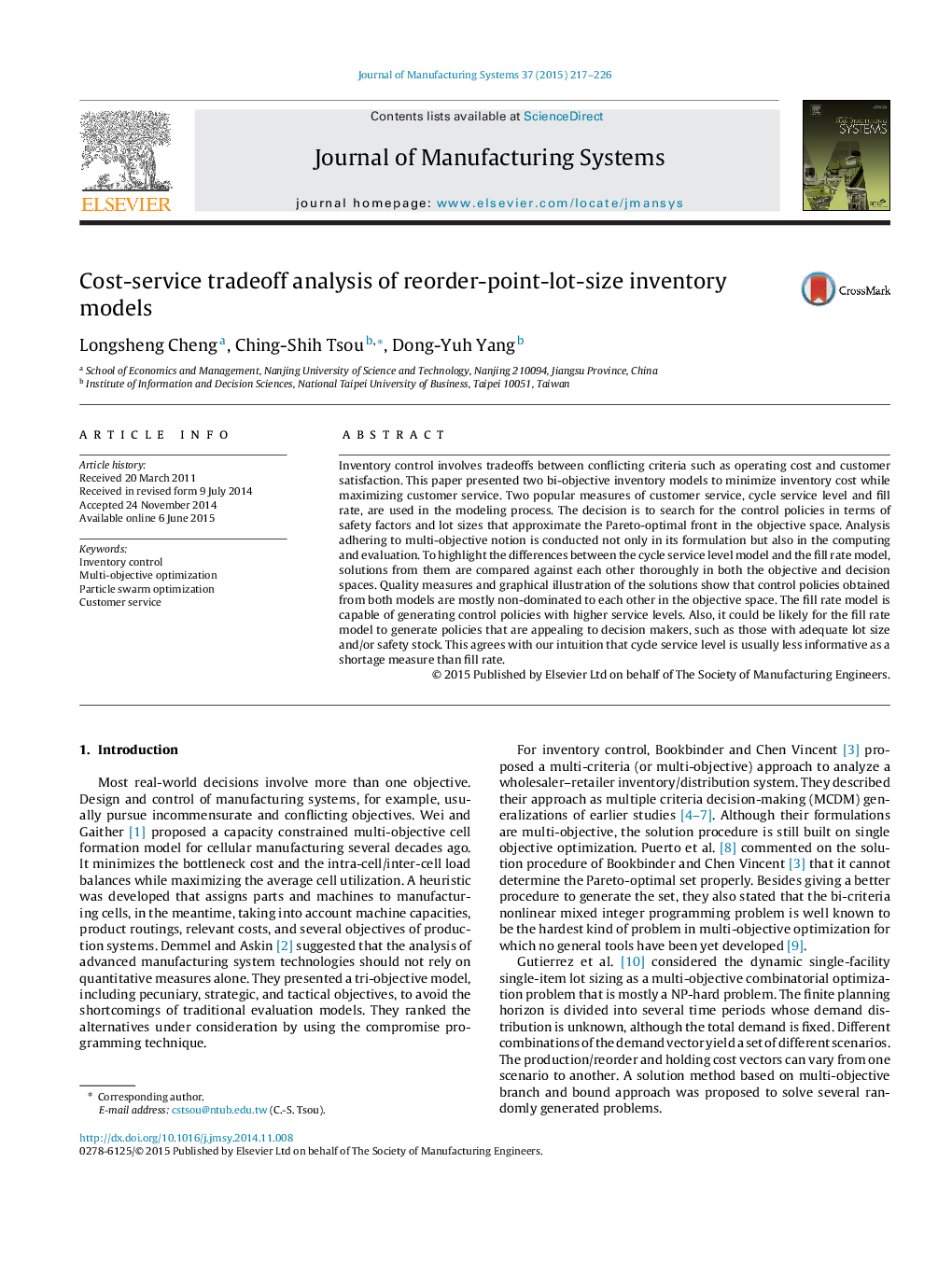| Article ID | Journal | Published Year | Pages | File Type |
|---|---|---|---|---|
| 1697539 | Journal of Manufacturing Systems | 2015 | 10 Pages |
Abstract
Inventory control involves tradeoffs between conflicting criteria such as operating cost and customer satisfaction. This paper presented two bi-objective inventory models to minimize inventory cost while maximizing customer service. Two popular measures of customer service, cycle service level and fill rate, are used in the modeling process. The decision is to search for the control policies in terms of safety factors and lot sizes that approximate the Pareto-optimal front in the objective space. Analysis adhering to multi-objective notion is conducted not only in its formulation but also in the computing and evaluation. To highlight the differences between the cycle service level model and the fill rate model, solutions from them are compared against each other thoroughly in both the objective and decision spaces. Quality measures and graphical illustration of the solutions show that control policies obtained from both models are mostly non-dominated to each other in the objective space. The fill rate model is capable of generating control policies with higher service levels. Also, it could be likely for the fill rate model to generate policies that are appealing to decision makers, such as those with adequate lot size and/or safety stock. This agrees with our intuition that cycle service level is usually less informative as a shortage measure than fill rate.
Related Topics
Physical Sciences and Engineering
Engineering
Control and Systems Engineering
Authors
Longsheng Cheng, Ching-Shih Tsou, Dong-Yuh Yang,
